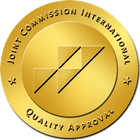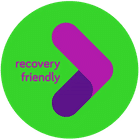Table of Contents
How Can Narcan Help Save Lives?
Narcan, also known as Naloxone, is a lifesaving medication that can quickly reverse the effects of substances, including opioids, heroin, and fentanyl. The medicine is fast-acting when delivered swiftly and correctly, making it a lifeline for many in dangerous situations. Awareness of Narcan is vital as the global community still faces the devastating effects of the ongoing opioid crisis.
Narcan is a medicine that clinicians and community programs more openly discuss because of its lifesaving properties for those taking substances like opioids or know someone who is. However, many in the public still question how Narcan can help save lives and how to use it.
In this blog by GateHouse Treatment, we will discuss the role of Narcan or Naloxone in saving lives amidst the ongoing opioid overdose crisis we are facing. This topic is both urgent and empowering to those in recovery and their surrounding communities.
We will explore critical drug facts, provide practical guidance on its administration, and emphasize the value of keeping Narcan accessible to more individuals in our quest to keep more people alive and safe.
Ultimately, addiction doesn’t discriminate, and it only takes one, even unintentional use, to experience a fatal overdose. With an estimate that 130 people die every day from opioid-related overdoses in the United States alone, it’s time to raise awareness and act so we keep saving more lives now. So please keep reading.
For more information about GateHouse Treatment, click here. To read other blogs about opioid use disorders and other forms of substance misuse, visit us here.
Understanding Opioid Overdoses
According to the CDC, over 107,000 people lost their lives in drug overdoses in 2022. In other data from the CDC, in many cases of drug overdoses, a bystander is present. This data is crucial to examine because it offers experts an opportunity to seek and implement solutions that mitigate the effects of these potentially preventable deaths and devastating overdoses.
Many experts propose campaigns to reduce the stigma around opioid addiction and improve access to Naloxone. They believe that these changes can help decrease overdose deaths. With more Narcan available, it could save lives in situations where someone is overdosing and another person is present, like those described above. Additionally, if more people have it, they can use it when necessary.
It’s essential to combine awareness and education with having Naloxone readily available. This knowledge is crucial if you or someone close to you is at a high risk of an opioid overdose, struggling with addiction, or socializing with people who are.
How Narcan Works
According to the National Institute on Drug Abuse, Narcan, also generically named Naloxone, is a medication that can temporarily reverse an occurring opioid overdose. In simpler terms, it helps someone who is overdosing to breathe normally, stop the cause of damage to the brain, and prevent death. This physiological effect of the medicine allows the person to regain consciousness and keep living.
Narcan acts quickly within 2 to 3 minutes of administration. In most cases, an individual administers one dose and then waits an additional 2 to 3 minutes to see if the individual’s breathing resumes normal. Waiting is an essential step before delivering another dose because, in some cases, further doses may not be necessary.
Administering Narcan
It’s essential to understand how effective and easy to use Naloxone is, as almost anyone can safely administer it and provide initial help in a crisis. Additionally, Naloxone has no potential for abuse and does not have any adverse effects if given to someone who is not overdosing on opioids. These features make the medication safer than many realize.
The two forms of Narcan safe for use by anyone without training or authorization include:
- Injectable solution: medicine administered into the muscle or under the skin with an injection
- Nasal spray: solution in a pre-filled device given through the nose
Understanding how to administer Narcan is crucial for anyone who might encounter an opioid overdose. Here’s a quick guide, but remember to follow the instructions on your medication label:
- Look for Signs of Overdose: these symptoms may include unresponsiveness, constricted pupils, slow or no breathing, and blue lips or fingertips.
- Administer: Follow the steps on the packaging in sequence.
- Call for Help: Always call emergency services during an overdose. Even if Naloxone revives the individual, it’s just the first step in securing their health.
- Remain Until Help Arrives: Stay with the person and monitor their condition until a medical professional arrives to help you further.
Stigma, Narcan, and the Ongoing Opioid Crisis
Unfortunately, stigma surrounds substance abuse and addiction for many, which can make individuals hesitant to ask for Narcan or admit they need it. This stigma is detrimental and not preventative, but in fact, further perpetuates the crisis and cycles of shame.
However, overdose statistics demonstrate why awareness is crucial in ensuring that individuals understand what Narcan is and why they may need to learn about it. Furthermore, individuals should know Narcan is available in all 50 states, and they can access it regardless of what they look like, their religion, or their culture.
Fortunately, access to Narcan and other harm-reduction measures do not typically enable or condone drug use. Instead, for many, it helps them to acknowledge the reality of their addiction, echoes the potential consequences of their use, and prioritizes saving lives.
Lastly, those in active addiction and their families should do their very best to recognize that substance dependency is a disease, not a failure of morals or a lack of integrity.
The Importance of Narcan Accessibility
Sadly, another barrier to saving lives during an opioid overdose besides stigma is the lack of access to Narcan. Fortunately, Narcan is becoming more available today, and many can obtain it without a prescription. It’s often available at pharmacies or through local health departments. In other cases, individuals can ask their doctors for Naloxone if they cannot get it through government departments, pharmacies, or community programs.
Furthermore, Good Samaritan laws protect those who administer Narcan to an overdose victim, encouraging bystanders to act without fear of legal repercussions when someone needs help.
Ultimately, having access to Narcan can provide peace of mind for both individuals in distress and those close, knowing that there is a safety net in case of a potential relapse. This access also helps individuals to focus on their recovery without the added fear or stress of a possible overdose.
The Role of Narcan in Residential Treatment for Substance Use
In addition to its importance in preventing fatal overdoses, Narcan also plays a vital role in many residential addiction treatments. Many individuals who enter this type of treatment have a history of opioid use and may be at risk for an overdose if they relapse, which makes it critical treatment staff keep it nearby.
Furthermore, integrating education about Narcan into treatment programs can help reduce stigma towards these harm-reduction strategies in the future, promoting greater acceptance around having Naloxone readily available among diverse populations.
Looking to the Future and Saving Lives
Narcan is a crucial tool in preventing loss of life and addressing the current opioid crisis. This medicine is easy to use and provides fast results. Furthermore, increasing its accessibility could mean saving thousands more lives every year. These highlights further demonstrate the importance of equipping family members, healthcare professionals, and community members with Narcan and the knowledge to use it.
By fostering a non-judgmental approach to substance abuse and overdose response, we can create and maintain a supportive environment that prioritizes saving lives over judging those who have fallen into the chains of addiction. This way, they can live to find their way out.
More About GateHouse Treatment
At Gatehouse Treatment, we commit to providing the necessary resources and addiction services to change the lives of those with substance use disorders (SUD) so they focus more on healing and less on using.
We recognize that every life matters, and many are affected by the chaos of substance misuse. Addiction doesn’t only harm those who pick up.
By providing clients with exceptional care, access to addiction experts, and a therapeutic facility that fosters genuine healing and substance abuse recovery, GateHouse Treatment offers many the space for change so they can strive towards living a healthier, safer life.
If you or a loved one needs help, please visit this link or call (855) 448-3588.
GateHouse Treatment proudly serves the Nashua, New Hampshire area.
Let’s work together to save lives and build a better future.
- Family Support and Addiction Recovery: 9 Helpful Tips - April 2, 2025
- 7 Powerful Tips for Single Mothers in Recovery from Alcohol! - February 6, 2025
- First Responders and Substance Use: A Guide to Recovery - December 31, 2024




